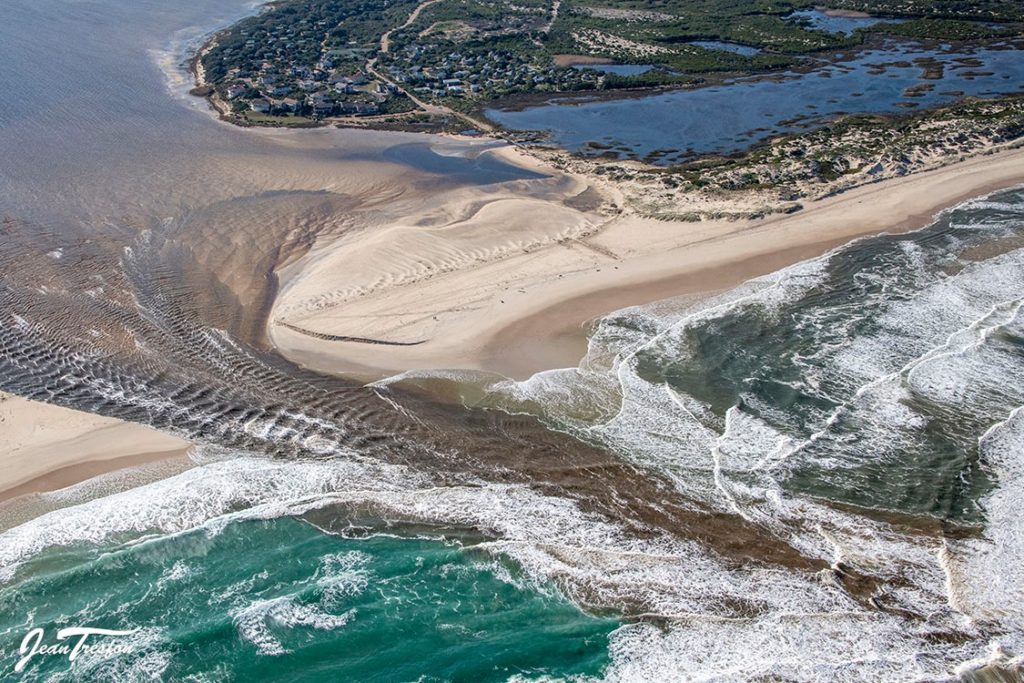
The lack of a good management plan of the Bot Estuary has been shown up by the recent artificial breach of the estuary in 2020.
Nature has evolved over thousands of years and is a complex interaction of air, water and earth with plants, animals and all other organisms. We are part of this complexity and our increase in numbers and our power to make changes in the world are having profound effects.
Our data, knowledge and understanding of the environment has increased exponentially over the past few decades with the use of computers and satellite image data. Our understanding of environmental reactions and the scale or size of those reactions has also increased similarly. What we understood about the environment a few decades ago may now prove to be incorrect.
The environmental laws of South Africa are generally sound. However, the application of these laws and regulations is a disaster. In the past, nature was able to accommodate changes that humans were making to the environment, because nature was more stable and resilient. Now human interactions with the environment are larger over shorter periods of time; all our systems are less stable and less resilient, therefore our interactions with the environment are leading to greater stresses in a much shorter time.
The structures of management of the environment (management plans and environmental assessments) have changed significantly over the last decade. Many of these are out-of-date and a repetition of outmoded management practices (with new catch phrases paying lip service to terms such as climate change and biodiversity loss). New levels of pollution, both in scale and kind, compound the problems of stress to ecosystems.
By far the biggest problem is, however, the changes in the application of government policy. Government is elected to apply the laws of the country and to serve the people. Government or quasi-government bodies have been established so that they can spread the responsibility of the application of the environmental laws. Environmental actions by government and quasi-government bodies have, however, tended to be reactions to disasters rather than to solving environmental problems. Disaster management can sometimes only be a short-term, ad hoc solution; the problem becomes deferred but not solved.
There are structures which exist for reporting environmental problems or damage to the environment. However, actions are designed to take so much time and to go through many departments or bodies. Much of the budget is spent on maintaining or defending government actions, rather than on doing what needs to be done. If a subsequent disaster occurs, then disaster management is applied: problem averted or ignored. More reports are generated to try to cover up the disaster management actions: half-truths are generated in order to deflect responsibility.
Locally in the Bot River/ Overstrand area, we have a considerable asset, the Bot River Estuary. However, the new Management Plan of the Bot Estuary 2020 is based on 30- to 40-year-old data. In the recent breaching of the estuary, government did not even follow their own management plan. The scale of the resultant environmental damage caused has been ignored. The Cape Nature report produced on the artificial breach has errors and is a cover up of half-truths and untruths, misleading the public. Nature is rapidly repairing the massive environmental damage caused by the wrong position of the artificial breach. However, the dynamics of the system have been so changed that this may take many years to return to a stable system without further intervention in the system.
These changed dynamics at the mouth of the estuary (which can be observed by a casual observer) are affecting the rest of the estuary as well. The mouth is still open and yet retains nearly a metre of water, even at low tide. The estuary was tending towards a fresh water system with the existing management plan (lagoon versus estuary). The wrong position of the breach is pushing the estuary more towards a fresh water system than the poor or lack of management was doing in the last few decades. The estuary management plan is supposed to provide a scouring service. The mouth section now has more than three times the sand build-up it had before the breach, because of the incorrect positioning of the breach. The wrong position of the artificial breach, with the resultant erosion of the old dunes, narrowly avoided an even greater disaster, where the risk of losing the entire dune field was heightened (covered in Facebook reports). Nature has significantly reduced this risk. However, the present unpredicted excessive silting of the mouth area and changed dynamics may heighten this risk again.
Botfriends published numerous pictures of observations of the artificial and natural breach (see Botfriends Facebook page) and on this website. Botfriends also reported on the ongoing situation to BREF (Bot River Estuary Forum) at their meeting in October 2020. Their observations were discounted, responsibility was denied and no investigations or gathering data were put into place. If nature cannot correct the situation of the smaller disaster by itself, do we have to wait until the whole system has been tipped into a new dynamic with a major disaster? This will be too expensive to recover from. The present situation is tending towards an inland fresh water lagoon, with very little input of saline water from the sea and a permanently open river, discharging water to the sea. This is rapidly changing the estuary to a fresh water lagoon, with a short river discharging through the extensive sand build-up, into the sea. A large-scale flood in the Bot River catchment area may correct this situation. However, extensive changes of water use in the catchment have already significantly reduced the risk of a large-scale flood.
A stable estuary has very high biodiversity, with numerous fish exchanges with the sea. It acts as a great fish nursery for species which can tolerate saline conditions. It changes from a closed system to an open system every couple of years, which usually includes large level changes (from sea level to a couple of metres of water) with the resultant large changes in the shoreline. A lagoon is primarily a fresh water system and has different biodiversity. It usually has a more stable water level which changes slowly with time. The species which occur are adapted to slow changes and not the sudden changes which result from breaching. The management of the two systems are significantly different. The present Management of Bot Estuary plan, does not achieve an estuary or a lagoon.
Ideally, we could have both, with a true estuary in the lower reaches and fresh water lagoons in the Afdaks and the Bot Rivers. This would result in many more different species of both flora and fauna close to each other. Such a proposal has been put forward by the author elsewhere. For more information go to Greenheart Facebook or other pages of Greenheart web site. The ongoing Part 2 has been posted.
Michael Austin (A friend of the Bot Estuary) March 2021

Recent Comments